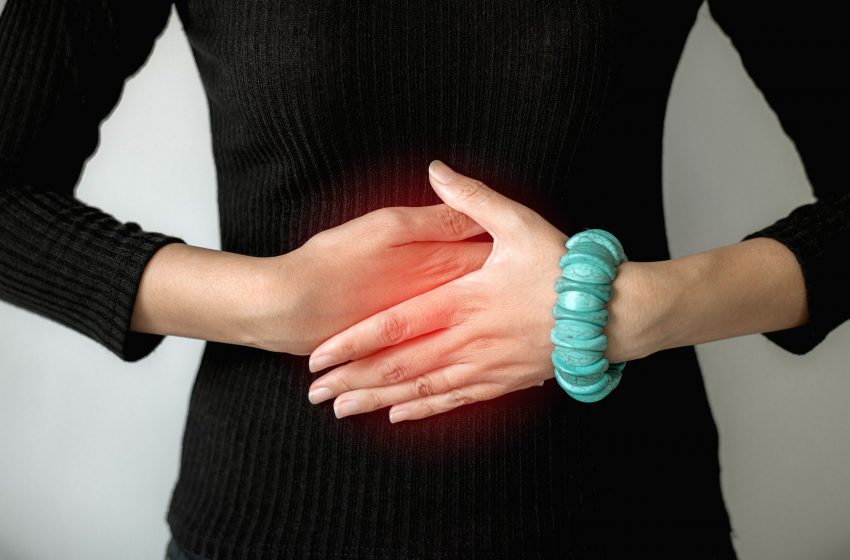
Pain Beside Belly Button | Causes And Treatment
Pain beside belly button is medically referred to as periumbilical pain. Like any other pain that one experiences, it is often an indication that something is wrong somewhere in the body. It can be experienced as a sharp or mild pain. It can also come as a constant or a come and go type of pain.
Sometimes, one may feel pain only near the belly button. There are also times, however, when the pain somehow radiates to some other parts of the body.
Regardless of how the pain behaves, it is important to understand that belly button pain or periumbilical pain is not a condition on its own. However, its presence can point to the correct condition when other symptoms are taken into account.
It is also noteworthy that sometimes this pain can be treated quickly through home remedies. There are other times though, when treatment may require medications or even surgery.
What exactly is periumbilical pain and what does it indicate?
Contents
Nature of Pain Beside Belly Button

The part of the human abdomen surrounding the belly button is called the umbilical region. This region contains parts of a person’s stomach, small intestine, large intestine, and pancreas. Pain around this area is medically termed periumbilical pain, a type of abdominal pain that is localized in the region around or behind the belly button (Schulman, 2019).
The type and the intensity of the pain that one feels in the umbilical region can help a doctor figure out the cause. Some experience sharp periumbilical pain, while others feel a sensation of bloating or pulling.
Other symptoms that often go with this type of pain are as follows – vomiting with blood; constant pain for more than four hours; chest pain on exertion; shortness of breath along with chest pain that radiates to the jaw, arm, or neck; and blood on the stool (Gotter, 2018).
Common Causes of Periumbilical Pain
Doctors say that there are many reasons someone may experience pain beside the belly button or periumbilical pain. Many of these causes are related to serious and potentially fatal conditions. Others, however, are simple, resolvable stomach issues. Some of the most common and less serious causes of pain around the navel area are indigestion, constipation and pregnancy (Barhum, 2020).
Indigestion is one common cause of periumbilical pain. It is a condition that is also called dyspepsia or upset stomach. It causes pain, burning, or discomfort in the upper abdomen, radiating to the belly button area. It can be treated with over-the-counter antacids and acid blockers.
Another common cause of periumbilical pain is constipation, a condition that almost everyone gets from time to time. Constipation happens when a person has three or fewer bowel movements in a one-week period.
When it is only occasional, constipation is treated with stool softeners and by adding processed or synthetic fibers to the diet. However, constipation that extends to two or more months is a source of concern.
Lastly, most pregnant women experience periumbilical pain. Pain that is associated with pregnancy is mild and happens naturally. Therefore, unless there is significant and ongoing discomfort and pain, it should not be taken as a source of concern.
Serious Causes of Periumbilical Pain
Some causes of periumbilical pain are not serious. However, others are. Therefore, if someone encounters or experiences pain around the belly button area, together with other underlying symptoms, that person should consult a doctor.
Symptoms that often go with serious causes of periumbilical pain are as follows – fever, diarrhea, prolonged constipation, bloating, nausea, vomiting, blood in the urine, pain when urinating, persistent urge to urinate, and loss of appetite (Kandola, 2018).
One of the serious causes of periumbilical pain is appendicitis, an inflammation of the appendix, a finger-shaped pouch that projects from the colon on the lower right side of the abdomen. The first sign that indicates this condition is a mild fever coupled with an intense pain around the belly button. At first, it might seem like a stomachache.
However, with appendicitis, the pain usually gets worse and moves to the lower right side of the umbilical region of the abdomen. The standard treatment for this condition is the surgical removal of the appendix (Brogan, n.d.).
Another serious cause of periumbilical pain is gallstones. Gallstones are hardened deposits of digestive fluid that can form in the gallbladder, a small, pear-shaped organ on the right side of the abdomen, just beneath the liver.
According to Mayo Clinic, gallstones range in size from as small as a grain of sand to as large as a golf ball. Some develop just one gallstone, while others develop many gallstones at the same time. Moreover, people who have symptoms require gallbladder removal surgery (Gallstones, n.d.).
Lastly, another possible serious cause of periumbilical pain is pancreatitis, the inflammation of the pancreas, a large gland behind the stomach and next to the small intestine. People with this condition needs advance treatment in hospitals (Pathak, 2021).
Better Than A Cure
Periumbilical pain or pain beside belly button sometimes indicates serious life-threatening conditions. These conditions often come from the unhealthy lifestyles of the persons who have them.
Since prevention is better than cure, it is important to always remember that with regular exercise, avoidance of unhealthy vices and proper diet, most of these causes of periumbilical pain can be avoided.
References:
Barhum, L. (January 15, 2020). Common causes of belly button pain. Medical News Today. Accessed 24 January 2022. https://www.medicalnewstoday.com/articles/319931
Brogan, R. J. (n.d.). appendicitis. In Kid’s Health. Retrieved 24 January 2022. https://kidshealth.org/en/parents/appendicitis
Gotter, A. (2018). Belly button pain. (Updated 2018 September 17). Healthline. Accessed 24 January 2022. https://www.healthline.com/health/belly-button-pain
Kandola, A. (November 21, 2018). What is this pain in my lower right abdomen? Medical News Today. Accessed 24 January 2022. https://www.medicalnewstoday.com/articles/320858
Mayo Clinic. (n.d.). gallstones. In Mayo Clinic. Retrieved 24 January 2022. https://mayoclinic.org/diseases-conditions/gallstones/symptoms-causes/
Pathak, N. (September 16, 2021). Pancreatitis. In Web MD. Retrieved 24 January 2022. https://www.webmd.com/digestive-disorders/digestive-diseases-pancreatitis
Schulman, J.S. (2019). 8 Causes of periumbilical pain and when to seek emergency help. (Updated 2019, April 16). Healthline. Accessed 24 January 2022. https://www.healthline.com/health/periumbilical-pain
